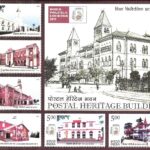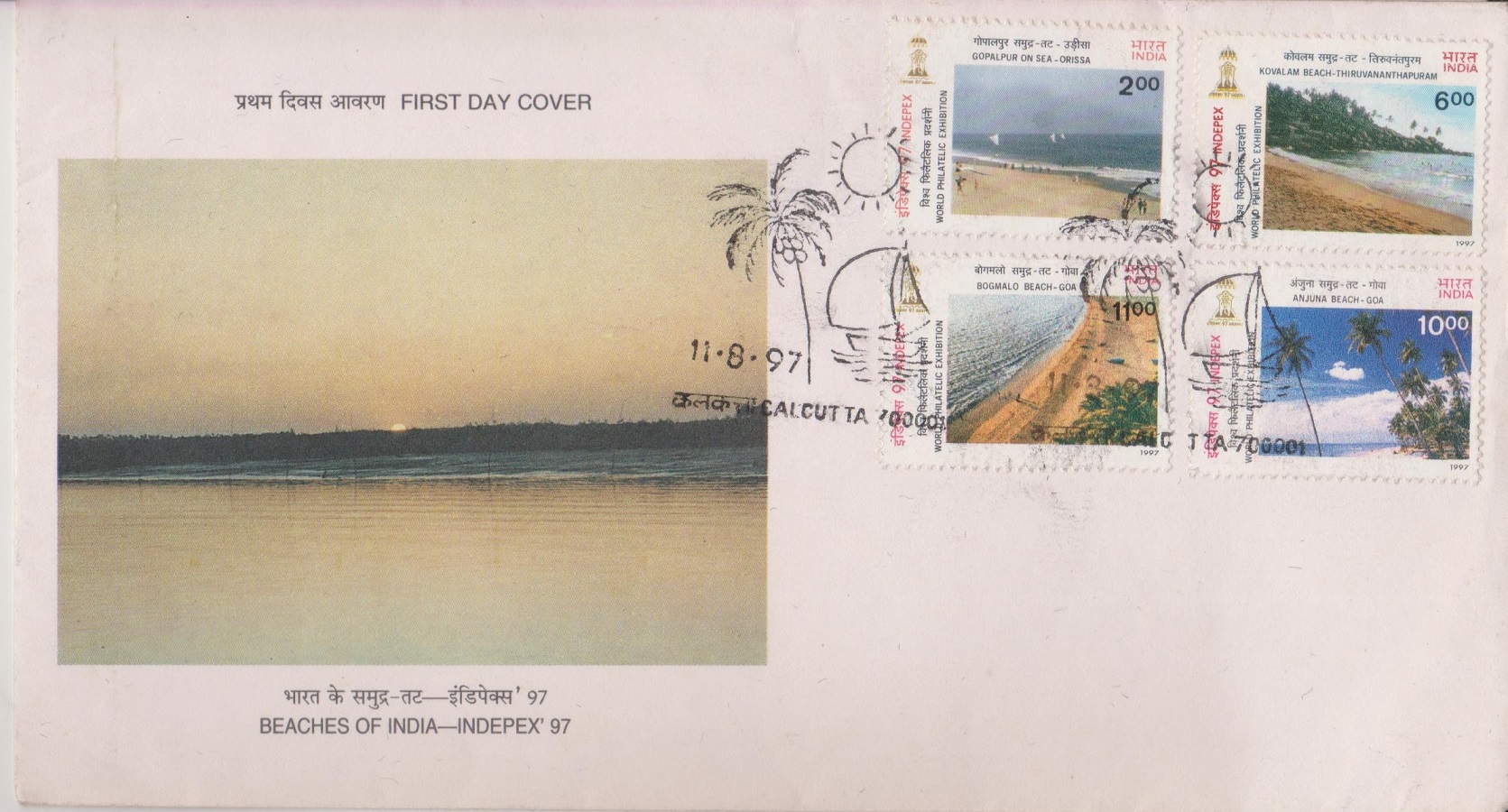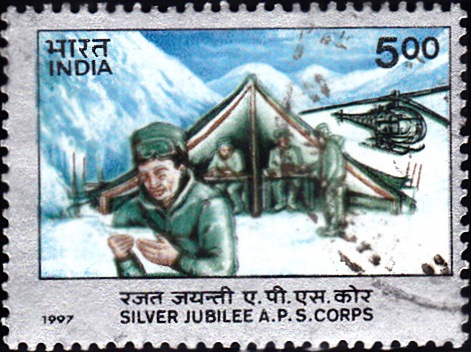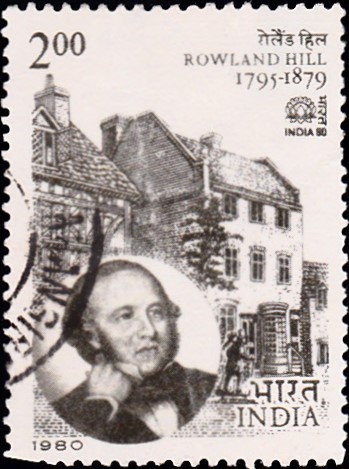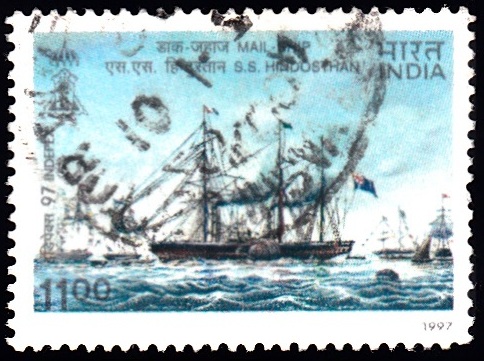
Indian Post Office Theme
Complete set of 4 nos. of commemorative postage stamps on Indepex ‘97, World Philatelic Exhibition :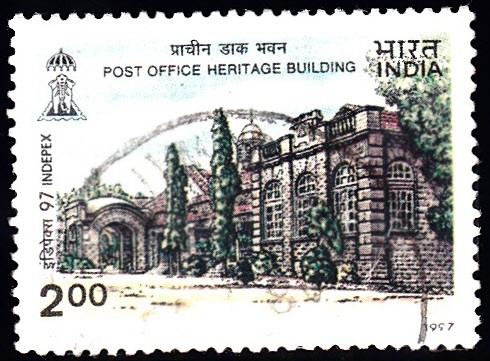
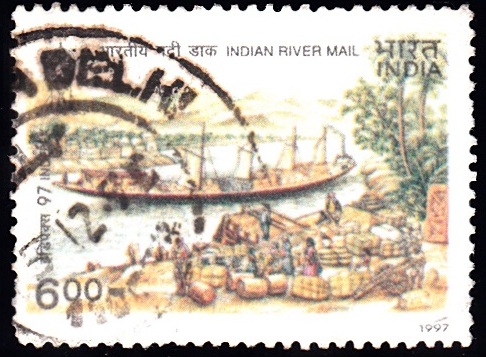
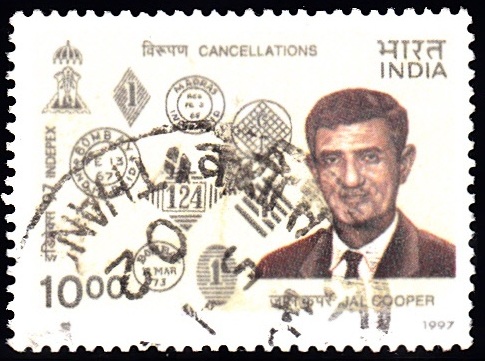

Issued by India
Issued on Dec 15, 1997
Issued for : The Department of Posts organised Indepex ’97 World Philatelic Exhibition coinciding with the Golden Jubilee celebration of India’s Independence. The exhibition was held from 15-22 December 1997 at Pragati Maidan, New Delhi. To commemorate this event, a series of stamps have been brought out. The first was on the logo of Indepex ’97 followed by Centres of Culture, Beaches of India and Rural Women. The final series of stamps of Indepex ’97 depict the post office theme which include a Mail Ship, the Indian River Mail, the Cancellation with a portrait of Jal Cooper and Post Office Heritage Building.
Credits : Indepex ’97 and Commissioner General Indepex ’97.
Cancellation : Smt. Alka Sharma
Type : Stamps, Postal Used
Colour : Multi Colour
Overall size : 3.91 X 2.90 cms.
Printing size : 3.55 X 2.54 cms.
Perforation : 13 x 13
Paper : Imported un w/m Adhesive Gravure Coated Stamp Paper in sheets 50.8 x 53.5 cms.
Stamps Printing : 0.7 Million each
Number per issue sheet : 9
Printing Process : Photogravure
Printer : India Security Press, Nasik
About :
- S. S. Hindostan
The S. S. Hindostan, a wooden paddle steamer of 2017 tons and 240 feet in length made in a Liverpool dockyard, commenced its majestic journey from Southampton on the 24th September 1842 to start steam ship communication between India and England. It carried mail and passenger and its passage round the Cape of Good Hope to Calcutta was completed faster than the overland mail to Bombay via the meditaranean and the Suez.
- The Indian River Mail :
An experimental River Mail was commenced in 1828 by Governor-General William Bentinck for carrying mail by river from Calcutta to Allahabad. By 1834 the Prinsep enterprise was well established with long boats of six sails and with steam power in front and rudder at the rear. These shallow crafts, could easily negotiate the river with hardly 2½ ft of water at most places even at the height of monsoon. Though initially they were used only for carriage of parcels (bhangi), later their carriage was extended to goods and mail as well.
- Cancellation :
The stamp on Cancellation depicts 5 very rare cancellations used on postal mails in the nineteenth century and onwards and an inset of Mr. Jal Cooper who is internationally held as an authority on Indian stamps. The Bombay foreign mail cancellation and the Bombay urban offices cancellation (the later had numbers from “1” to “13”; number “1” being allotted to the Head office) were seen with dates 1865 to 1873. A unique single obliterator cancellation framing a thick “1” among 5 heavy bars was seen on foreign mails from Calcutta dating to 1872 & 1873. The stamp also shows Madras City local cancellations with dates of 1864 and 1865. The fifth cancellation was used from 1871 & 1872 in Aden Cantonment which was annexed to British India in 1839 and had come under the authority and management of Governor General of India since 1932.
- Shri Jal Cooper :
Born in 1905 he started stamp collection at a very early age and he was to make his presence fell throughout the philatelic world. From years of study and the intimate knowledge gained by varied and wide correspondence and discussions with fellow philatelists and renowned authorities the world over he established his position as an authority on Indian Stamps. His very intimate knowledge of Indian postal markings both in India and abroad was practically unrivalled.
- Pune H.O. Heritage Building :
Pune Head Post Office, popularly known as “Pune GPO” was built in 1913, on drawing inspiration from 16th Century Italian Renaissance architect Andrea Palladio, on a two acre sprawling campus in the centre of the City. The architecture is in the Palladian style, with characteristic features: Tuscan columns in the Varandha, arched windows, balusters for railings and parapets and high ceiling halls.
In the garden, there are two “Hatti Dagad”, used to tie up the elephants which carried the mail at one time.


